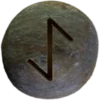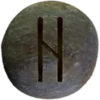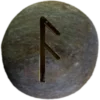Last Updated on October 10, 2024

The Darraðarljóð is an ancient poem that describes the Valkyries weaving the fates of warriors before a great battle. It appears in Njáls Saga, where it is recited by a man named Dörruð, who witnesses twelve Valkyries weaving with the entrails of men. These Valkyries determine who will die and who will survive in the impending battle. Their loom uses severed heads as weights, swords as beaters, and arrows as the warp and weft.
The Darraðarljóð shows the connection between the Valkyries and the fate of warriors in battle. These warrior maidens serve Odin, choosing which warriors will enter Valhalla. The poem describes them as calm, methodical, and focused as they weave the death and destruction of men, showcasing their detachment from the emotions of mortals. Their weaving represents the inescapable fate of those bound for battle. Each thread corresponds to a life, and once woven into the fabric of fate, that life will end.
The poem echoes the power of the Norns, the spinners of fate in the world of men and gods. The Valkyries, though primarily focused on warriors, serve a similar role by determining the outcomes of battles. Their weaving is not just a literal task but a symbolic act, sealing the destinies of those involved in the conflict.
Rune Connection and Significance
The Darraðarljóð can be associated with the Eihwaz Elder Futhark rune (ᛇ), which represents the yew tree and the mysteries of life and death. Eihwaz stands for protection, resilience, and the inevitability of fate. Much like the Valkyries’ weaving, this rune symbolizes the cycle of life, death, and rebirth. Eihwaz reminds us that fate governs much of existence, and the Valkyries’ actions in the Darraðarljóð illustrate this truth.
In Asatru, the Darraðarljóð resonates as a reminder of the power and inevitability of fate. The Valkyries represent the gods’ influence over the mortal world, particularly in moments of violence and chaos. By understanding the Darraðarljóð, followers gain insight into the deep connection between life, death, and the forces that control destiny. The poem serves as a powerful reflection on mortality and the role of fate in shaping lives and deaths.


